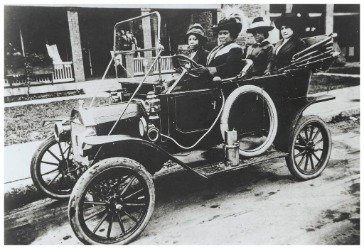Content

Using the formula to calculate these figures provides the annual depreciation expense, which is a measure of the amount by which an asset’s value declines each year. There are many other methods of calculating depreciation, such as the declining balance method and the sum-of-the-years’ digits method. However, the straight line method is one of the most common and widely used ways to calculate depreciation. Accountants like the straight line method because it is easy to use, renders fewer errors over the life of the asset, and expenses the same amount everyaccounting period. Unlike more complex methodologies, such asdouble declining balance, straight line is simple and uses just three different variables to calculate the amount of depreciation each accounting period. When calculating a business’s contra account, bad debts, depletion and depreciation of the company’s assets are all crucial deductions to make. In order to write off the cost of expensive purchases and calculate your taxes accurately, knowing how to determine the depreciation of your company’s fixed asset is critical.
- It is based on the accounting equation that states that the sum of the total liabilities and the owner’s capital equals the total assets of the company.
- This formula will give you the dollar amount by which the item’s value will decrease each year.
- At the end of the equipment’s ten-year life period, Jason sells the equipment to a used parts store.
- The cost of an asset is the amount that was paid to purchase it, while the salvage value is the estimated value of the asset at the end of its useful life.
- Depreciation is an accounting method of allocating the cost of a tangible asset over its useful life to account for declines in value over time.
- It is easiest to use a standard useful life for each class of assets.
From buildings to machines, equipment and tools, every business will have one or more fixed assets likely susceptible to depreciate or wear out gradually over time. For example, with constant use, a piece of company machinery bought in 2015 would have depreciated by 2019. For example, due to rapid technological advancements, a straight line depreciation method may not be suitable for an asset such as a computer. A computer would face larger depreciation expenses in its early useful life and smaller depreciation expenses in the later periods of its useful life, due to the quick obsolescence of older technology. It would be inaccurate to assume a computer would incur the same depreciation expense over its entire useful life.
Straight-Line Depreciation Rate
The straight-line How To Calculate Straight Line Depreciation Formula of depreciation is the most common method used to calculate depreciation expense. It is the simplest method because it equally distributes the depreciation expense over the life of the asset. The method that takes an asset’s expected life and adds together the digits for each year is known as the sum-of-the-years’-digits method. Determining monthly depreciation for an asset depends on the asset’s useful life, as well as which depreciation method you use. It is the easiest depreciation method because it uses consistent depreciation over time. Other methods of deprecation will adjust expenses based on the assets’ use.
NECESSITY RETAIL REIT, INC. Management’s Discussion and Analysis of Financial Condition and Results of Operations. (form 10-K) – Marketscreener.com
NECESSITY RETAIL REIT, INC. Management’s Discussion and Analysis of Financial Condition and Results of Operations. (form 10-K).
Posted: Thu, 23 Feb 2023 13:36:06 GMT [source]
According to the table above, Jim can depreciate the tractor over a three-year period. It is calculated by dividing the difference between an asset’s cost and its expected salvage value by the number of years it is expected to be used. But, you don’t have to do it yourself, especially if you run a large company with many assets that are liable to depreciation. You can always hire a professional accountant solution to handle this part of your business. Net book value is the depreciated value for tax purposes at the end of the prior period. The Prior Year Net Book Value is the depreciated value for tax purposes at the end of the prior year. Days held in current period – The number of days between the asset acquisition date or start date of the current period and the end of life date or the end of the current period .
Example of Straight Line Basis
The remaining value of a piece of equipment at the end of its useful life is called the residual value. Straight-line depreciation has advantages and disadvantages, and is only one of many other methods used to calculate depreciation. The estimated market value of an asset at the end of its usage life is called salvage value.

As such, the depreciation expense recorded on an income statement is the same each year. This method is calculated by adding up the years in the useful life and using that sum to calculate a percentage of the remaining life of the asset. The percentage is then applied to the cost less salvage value, or depreciable base, to calculate depreciation expense for the period. The term “double-declining balance” is due to this method depreciating an asset twice as fast as the straight-line method of depreciation. The “2” in the formula represents the acceleration of deprecation to twice the straight-line depreciation amount. However, when using the double-declining balance method of depreciation, an entity is not required to only accelerate depreciation by two.
Depreciation Expense Calculation Examples
Secure a second layer of protection by hiring an accountant with a comprehensive Accountant Professional Liability or Errors & Omissions insurance policy to handle your financial records. There’s no guarantee that a depreciation mistake will result in serious consequences, but with layers of protection in place, you can be confident you’re covered for any obstacles that come your way. Depreciation is a deductible business expense, which means that you don’t need to pay taxes on the amount of depreciation an asset accumulates in a particular tax year. It’s important to calculate depreciation to ensure you’re saving as much as possible on your business taxes. Calculating depreciation accurately will help you avoid an IRS audit or unnecessary penalties for mistakes.
How do you calculate straight-line depreciation?
- You subtract the salvage value from the cost basis.
- Divide that number by the number of years of useful life.
- This will give you your annual depreciation deduction under the straight-line method.
The carrying value, or book value, of an https://intuit-payroll.org/ on a balance sheet is the difference between its purchase price and the accumulated depreciation. Multiply the asset’s fixed-percent depreciation by the purchase price of the asset to determine the amount of depreciation for the first year of the asset’s life. The diminishing balance method achieves the same outcome as the double-declining balance method, but at a less aggressive pace. Companies might select the diminishing balance method for a tech asset whose company releases updated models every 10 years instead of every five.
